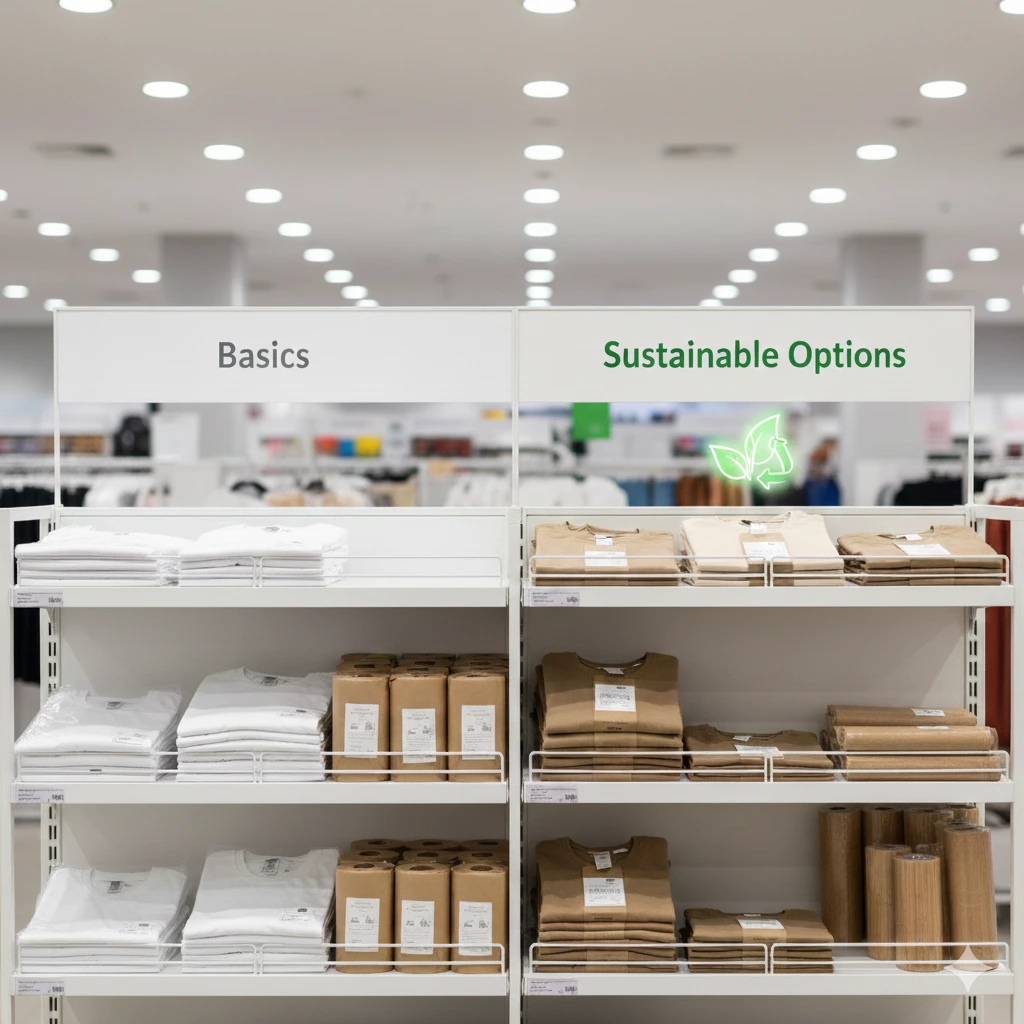
Key Insight: The retailers who won 2025 were those proving that sustainability and cost control aren’t competing priorities, they’re two sides of the same strategy.
The Cost vs Sustainability debate – retailers are facing a growing dilemma. How to meet the increasing consumer demand for sustainability while managing ever tighter margins. This tension between environmental responsibility and profitability is reshaping retail across all sectors from fashion to food, to electronics to homewares.
As brands continue to struggle with the impact of a turbulent 2025 of National Insurance hikes, increased supplier pricing and even cyber-attack costs running into millions of pounds for several retailers, the year turned out to be anything but business as usual.
Many will be asking where they should prioritise their eco-friendly investments or even questioning if there is there still room for sustainability in retail as we head into 2026.
Retailers operate in an environment where price remains a primary driver of procurement decisions. The idea that consumers are willing to spend more for sustainable products isn’t always borne out at the till. With increased cost-of-living impact and rising expenses, there is a gap between good intentions and actual buying behaviour.
A fifth of consumers state sustainability is now less important to them due to on-going price concerns
When faced with a choice between sustainable products at a premium price and a conventional alternative – budget will often dictate the final decision.

Depending on the sector, margins can be as low as 1% and these additional costs are difficult if not impossible to absorb. Costs increases will find their way to the consumer or will be attempted to be offset through operational efficiencies – but how do retailers start to recover these costs?
Despite these challenges, sustainability initiatives can still contribute positively when strategically implemented:
Brand Loyalty – In crowded and competitive markets, sustainability can still create meaningful differentiation, especially when many brands may start moving away from more sustainable product offerings. While price is driving purchasing decisions for many consumers, the brand that is able to demonstrate an environmental approach does enjoy increased loyalty from a customer base less concerned with price.
Operational Improvements – This area can be a huge win for retailers, achieved almost as a by-product of introducing more sustainable processes. Initiatives such as better use of resources, waste reduction and energy conservation all deliver long-term savings. Using intelligent ordering platforms such as MyAcopia which are designed specifically for GNFR consumables procurement, means Retailers can get closer to understanding what they are spending, reducing their admin and setting individual store budgets that work. Having this visibility means eliminating overspending and overstocking. Smarter sourcing, streamlined deliveries and better stock management all translate into those operational efficiencies and help to offset rising costs.
Future-Proofing – the regulatory landscape continues to evolve around carbon emissions, waste management, EPR and the PPT. Compliance is mandatory, so it makes sense to embrace it and quickly develop learning and expertise. This is also important when it comes to staff and attracting new talent where genuine sustainability commitments help to align company and employee values.
And it doesn’t have to be tackled all at once.
Rather than thinking sustainability progress needs to be all or nothing, a phased approach might well be more achievable. An easy win could be to think about the amount of virgin plastic being used on the shop floor in clothing tags for example. Swapping these out to recycled content tagging attachments such as Velo made from 100% post consumer waste is a simple product change, is easy to implement and has lasting impact.
Starting small is better than no start at all
Thinking about progressive milestones is a great way to plot progress towards more sustainable processes and products:
The reality is that sustainability itself is becoming a cost of doing business. As regulations tighten, consumer expectations evolve and climate impact increases, retailers who view sustainability solely as a premium offering rather than a fundamental part of the business risk significant competitive disadvantage.
The winners in retail’s next chapter will be those who reframe the cost vs sustainability equation, seeing sustainability not as a cost centre but as an opportunity to revisit products, services and operations for both environmental and economic benefit.
About MyAcopia
MyAcopia is a bespoke ordering platform designed to work with you and your busy teams for simplified retail consumables. Find out how MyAcopia gives you more data, more control and more clarity.